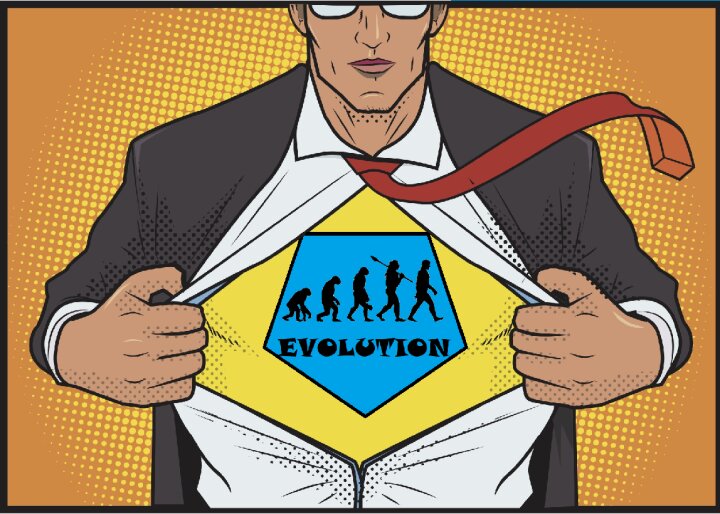This page is a permanent link to the reply below and its nested replies. See all post replies »
newjaninev2 · 56-60, F
@Anton says that:
Well, let's see some of that evidence and see if he can offer a better explanation of it.
All vertebrates have discs of cartilage that lubricate the joints between the vertebrae in the spinal column. These discs are compressible to absorb shock and strain. They have the consistency of firm rubber and allow the spine to be flexible while remaining strong. In humans, though, these discs can “slip” because they are not inserted in a way that makes sense given our species’ upright posture.
In all vertebrates except humans the spinal discs are positioned in line with the normal posture of that animal. For example, the spinal columns of fish endure completely different kinds of strain than the spinal columns of mammals. The fish uses its backbone to stiffen its body and then pulls against it in a side-to-side motion in order to swim. But fish don’t have to worry much about gravity and shock absorption since they are suspended in water.
Mammals, however, must use limbs to hold their body weight, and those limbs must attach to the spinal column. Different mammals have different postures and so require different strategies for weight distribution via the spine. In almost all of the tremendously diverse spinal columns found in nature, the spinal discs have adapted to the posture and gait of the animal. But not ours.
As our ancestors evolved into a more upright posture, the lumbar (lower) area of the vertebral column became sharply curved. It’s that curve in our lower backs that allows us to walk upright, and to move faster than when we walked on a fours. Unfortunately, that rearrangement of our bones wasn’t accompanied by alterations to the spinal discs. Consequently we’re left with a lower back that is kind of, sort of, might be, could be adequate, but definitely not ‘perfect’ (whatever that would be).
Human vertebral discs are in an arrangement that is optimal for knuckle-walkers, not upright walkers. They still do a decent job of lubricating and supporting the spine, but they are much more prone to being pushed out of position than the vertebral discs of other animals. They are structured to resist gravity by pulling the vertebral joints toward the chest, as if humans were on all fours. With our upright posture, however, gravity often pulls them backward or downward, not toward the chest. Over time, this uneven pressure creates protuberances in the cartilage. This is known as a spinal disc herniation or, more commonly, a “slipped disc.”
Spinal disc herniation is unheard of in any primate species except humans.
There are no "evidence" for Evolution
Well, let's see some of that evidence and see if he can offer a better explanation of it.
All vertebrates have discs of cartilage that lubricate the joints between the vertebrae in the spinal column. These discs are compressible to absorb shock and strain. They have the consistency of firm rubber and allow the spine to be flexible while remaining strong. In humans, though, these discs can “slip” because they are not inserted in a way that makes sense given our species’ upright posture.
In all vertebrates except humans the spinal discs are positioned in line with the normal posture of that animal. For example, the spinal columns of fish endure completely different kinds of strain than the spinal columns of mammals. The fish uses its backbone to stiffen its body and then pulls against it in a side-to-side motion in order to swim. But fish don’t have to worry much about gravity and shock absorption since they are suspended in water.
Mammals, however, must use limbs to hold their body weight, and those limbs must attach to the spinal column. Different mammals have different postures and so require different strategies for weight distribution via the spine. In almost all of the tremendously diverse spinal columns found in nature, the spinal discs have adapted to the posture and gait of the animal. But not ours.
As our ancestors evolved into a more upright posture, the lumbar (lower) area of the vertebral column became sharply curved. It’s that curve in our lower backs that allows us to walk upright, and to move faster than when we walked on a fours. Unfortunately, that rearrangement of our bones wasn’t accompanied by alterations to the spinal discs. Consequently we’re left with a lower back that is kind of, sort of, might be, could be adequate, but definitely not ‘perfect’ (whatever that would be).
Human vertebral discs are in an arrangement that is optimal for knuckle-walkers, not upright walkers. They still do a decent job of lubricating and supporting the spine, but they are much more prone to being pushed out of position than the vertebral discs of other animals. They are structured to resist gravity by pulling the vertebral joints toward the chest, as if humans were on all fours. With our upright posture, however, gravity often pulls them backward or downward, not toward the chest. Over time, this uneven pressure creates protuberances in the cartilage. This is known as a spinal disc herniation or, more commonly, a “slipped disc.”
Spinal disc herniation is unheard of in any primate species except humans.





